Table of Contents
Toggleefficiently managing employee vacations, personal time off (PTO), and sick leaves is critical to maintaining team productivity and harmony. As teams expand, especially with the rise of remote and hybrid work, traditional methods like spreadsheets and manual tracking quickly become inefficient, error-prone, and difficult to scale. This is where the vacation trackers come into play.
Vacation trackers are dedicated tools—either as standalone software or integrated within existing platforms—that help businesses manage, monitor, and streamline time-off requests and approvals. This article will guide you through what a vacation trackers are, why your business needs one, the key features to consider, and some of the best options available today
What Is a Vacation Tracker?
Vacation trackers are digital tools designed to automate and simplify the process of managing employee leave. It centralizes time-off requests, approvals, and leave balances, eliminating the need for clunky spreadsheets, endless email chains, or manual calculations.
Vacation trackers come in various forms, from simple calendar tools to robust software that integrates with HR systems and workplace apps like Slack, Microsoft Teams, or Google Workspace. They provide a transparent, easy-to-use system where employees can request time off, managers can approve or deny requests in real-time, and HR teams can generate reports and ensure policy compliance effortlessly.
1. Reduces Administrative Workload
Tracking vacation days manually can quickly become a tedious and time-consuming task, especially as the team grows. HR managers and team leads often find themselves buried under piles of leave requests, juggling between spreadsheets, email threads, and calendar invites to ensure everything is properly recorded.
A vacation tracker automates this process, reducing the administrative burden significantly. It eliminates repetitive tasks like updating spreadsheets or manually calculating leave balances, allowing HR teams to focus on more strategic activities like talent development and employee engagement.
Example: Instead of spending hours at the end of each month reconciling time-off data from different sources, HR managers can generate a report with just a few clicks, showing all approved and pending leaves in one place.
2. Improves Transparency and Communication
One of the biggest challenges in managing employee leave is maintaining clear communication between employees, managers, and HR. Miscommunication can lead to overlapping vacations, understaffed teams, and even workplace tension.
A vacation tracker provides full visibility into who is on leave and when, making it easier to plan projects, allocate resources, and avoid scheduling conflicts. Employees can see their leave balances and team calendars, while managers can approve or decline requests with all the information at their fingertips.
Example: Imagine a situation where two key team members unknowingly plan vacations during the same week, jeopardizing an important project deadline. A vacation tracker with shared calendars helps prevent such conflicts by giving everyone a clear view of team availability.
3. Ensures Compliance with Leave Policies
Every organization has its own set of leave policies, whether related to vacation accrual, sick days, or statutory holidays. Keeping track of these policies manually can be challenging, especially for global teams dealing with different labor laws and regulations.
Vacation trackers enforce these policies automatically. They can be customized to reflect different leave types, accrual rules, carryover limits, and maximum allowable days off. This ensures consistency across the organization and helps avoid disputes related to leave entitlements.
Example: If your company allows a maximum of 20 vacation days per year with a carryover limit of 5 days, a vacation tracker will automatically apply these rules. Employees will be notified when they reach their limit, and HR won’t have to manually monitor each person’s usage.
4. Provides Data and Insights
Vacation trackers aren’t just about managing requests—they also provide valuable insights into employee leave patterns. Through comprehensive reporting and analytics, managers can identify trends such as frequent absenteeism, seasonal spikes in vacation requests, or potential burnout risks.
This data helps leaders make informed decisions about workload distribution, hiring needs, and even employee wellness initiatives.
Example: If reports show that employees are not using their vacation days, it might indicate an overworked team culture, prompting management to encourage better work-life balance. Conversely, spotting patterns of frequent short-term absences could highlight underlying issues like job dissatisfaction or health problems.
Key Features to Look for in a Vacation Tracker
Choosing the right vacation tracker isn’t just about picking the most popular tool on the market—it’s about finding the solution that aligns with your organization’s specific needs, culture, and workflow. Here are some critical features to consider when selecting a vacation tracker:
1. User-Friendly Interface
A vacation tracker should simplify processes, not complicate them. An intuitive, easy-to-use interface is crucial for ensuring that both employees and managers adopt the tool quickly and use it effectively.
Look for software with a clean, simple dashboard that makes it easy to submit and approve requests, view leave balances, and generate reports. A steep learning curve can lead to resistance from staff, defeating the purpose of introducing the tool in the first place.
Example: A well-designed vacation tracker allows employees to submit a leave request in just a few clicks, while managers can approve or decline requests with a simple tap on their phone or desktop.
2. Integration with Existing Tools
To maximize efficiency, your vacation tracker should integrate seamlessly with the tools your team already uses. Whether it’s Slack, Microsoft Teams, Google Workspace, or project management tools like Asana or Trello, integration helps create a streamlined workflow without the need to switch between multiple platforms.
Integrations also allow for automatic calendar updates, so team schedules are always up-to-date, and no one misses important deadlines due to unplanned absences.
Example: With Slack integration, employees can request time off directly within the chat app, and managers can approve it without leaving their Slack workspace. The approved leave is then automatically added to the team calendar.
3. Customizable Leave Types and Policies
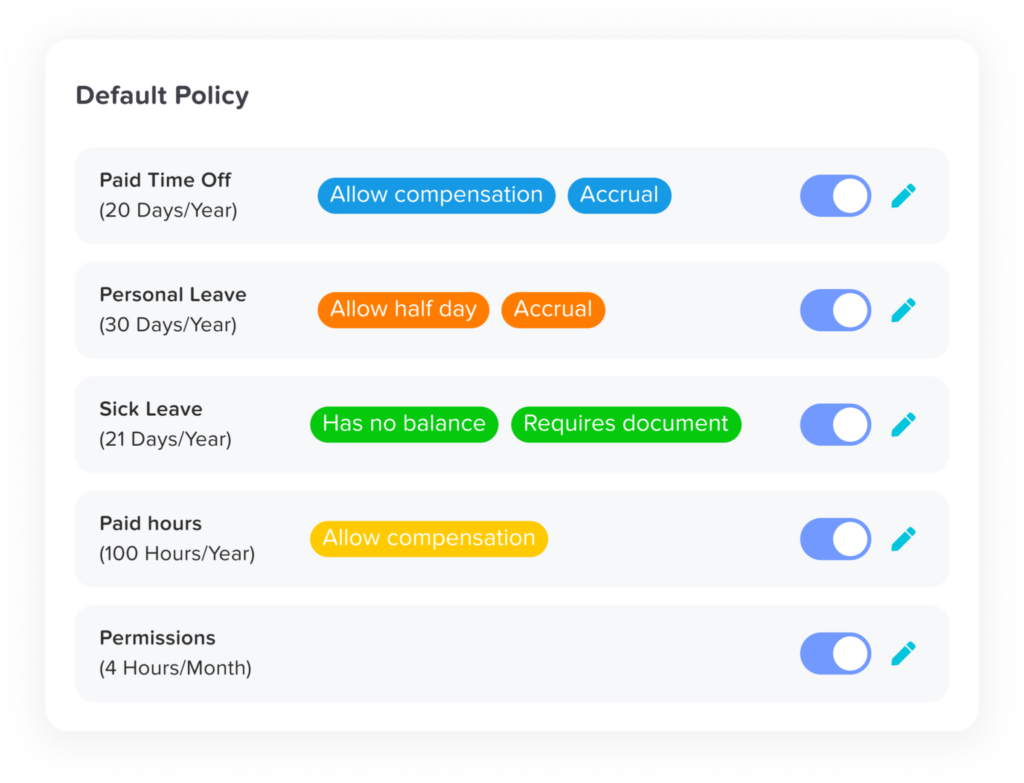
Every organization has unique leave policies, and your vacation tracker should be flexible enough to accommodate them. Look for tools that allow you to create custom leave types (e.g., vacation, sick leave, parental leave, unpaid leave) and set rules for accrual, rollover, and approval processes.
This customization ensures that the system aligns perfectly with your company’s policies and makes it easier to manage complex leave scenarios, such as part-time employees or international teams with different holiday schedules.
Example: If your company offers a special “wellness day” or “volunteer leave,” you can add these as unique leave types with specific rules and approval workflows.
4. Automated Notifications and Reminders
A good vacation tracker keeps everyone informed without constant manual follow-ups. Automated notifications for pending approvals, upcoming vacations, or changes to leave policies ensure that no request goes unnoticed and that employees stay aware of their remaining leave balances.
This feature not only saves time but also minimizes the risk of forgotten requests or overlooked approvals.
Example: If a manager forgets to approve a pending leave request, the system will automatically send a reminder. Similarly, employees receive alerts when their leave requests are approved, denied, or nearing their leave limit.
5. Mobile Access
In today’s mobile-first world, having access to your vacation tracker on the go is crucial. A mobile-friendly interface or dedicated app allows employees and managers to handle time-off requests from anywhere, whether they’re at home, commuting, or traveling.
This flexibility is particularly important for remote teams or companies with field employees who may not have regular access to a desktop.
Example: An employee can quickly submit a sick leave request from their smartphone while at home, and their manager can approve it instantly, even while attending an off-site meeting.
6. Reporting and Analytics
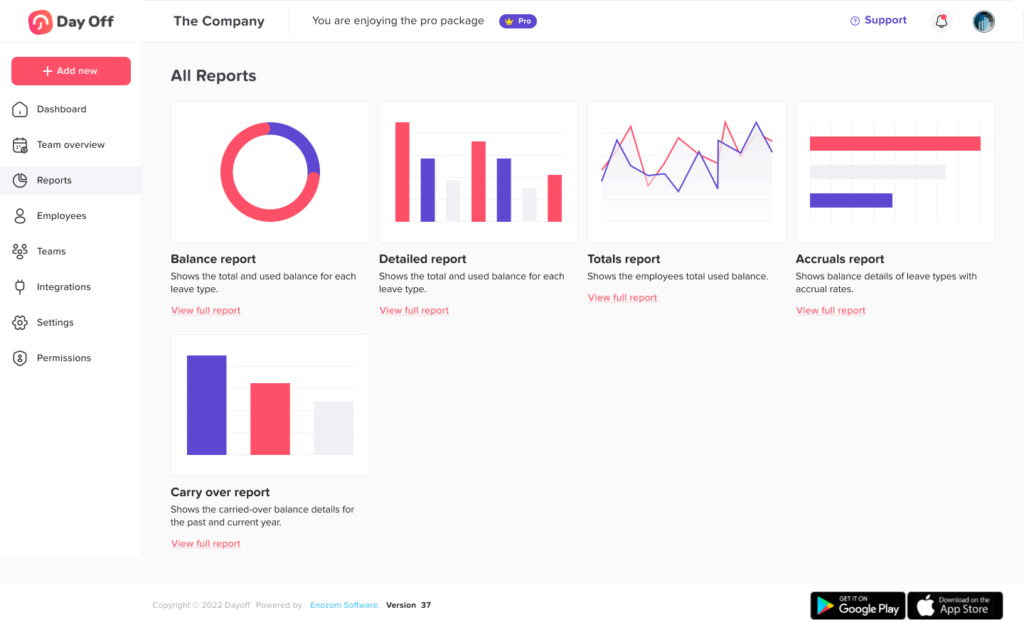
Detailed reports on leave usage help HR and management teams make data-driven decisions. Whether it’s identifying trends in absenteeism, planning for peak vacation seasons, or ensuring compliance with labor regulations, robust reporting features are essential.
Look for vacation trackers that offer customizable, exportable reports and visual dashboards for quick insights.
Example: HR can generate monthly reports to see which departments are taking the most time off, helping them identify if certain teams are overworked or if there’s a need for additional hiring.
7. Security and Privacy
Since vacation trackers handle sensitive employee data, security is non-negotiable. Choose a tool that prioritizes data protection, offers encryption, and complies with privacy regulations like GDPR.
Ensure that the tool provides role-based access, so only authorized personnel can view or modify sensitive information.
Example: Managers should only have access to the leave data for their team members, while HR administrators can view and manage company-wide records.
Top Vacation Tracker Tools in 202
Here are some of the best vacation tracker tools available today, each catering to different organizational needs. Whether you’re looking for a simple solution for a small team or a comprehensive system for a large enterprise, there’s an option for you.
1. Day Off
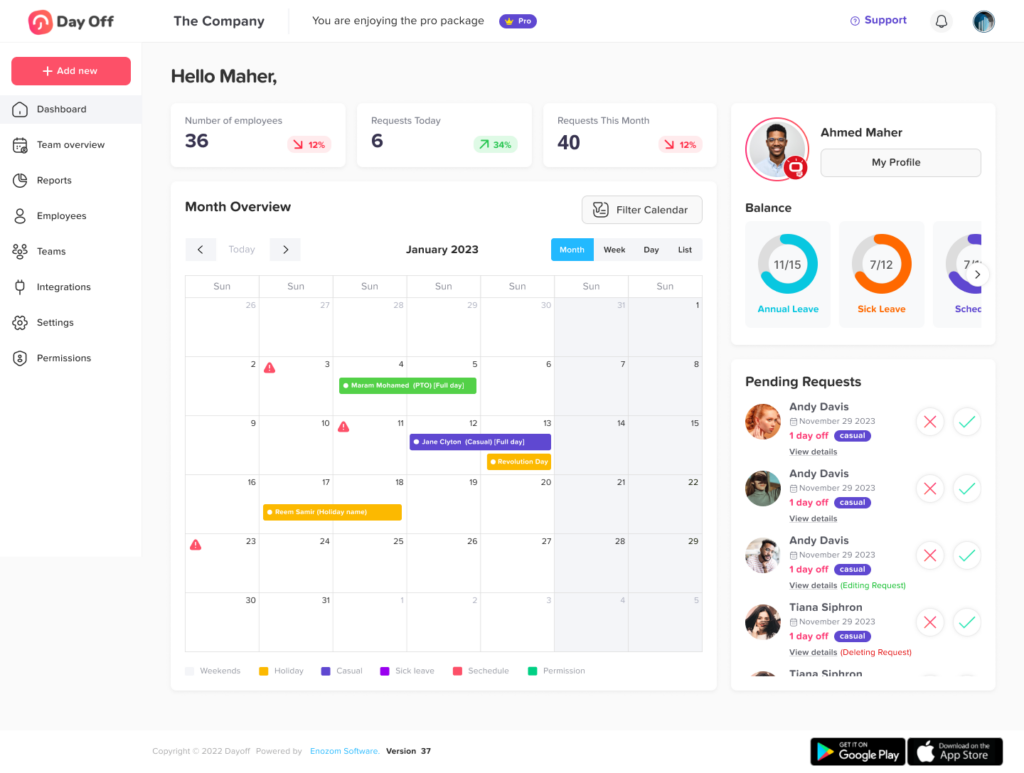
Day Off is a simple, yet powerful vacation tracker designed to make leave management effortless for teams of all sizes. With its intuitive interface and mobile-first approach, Day Off allows employees to request time off in seconds, while managers can approve or decline requests with just a tap.
It integrates seamlessly with popular tools like Google Calendar and Slack, ensuring that team schedules are always up-to-date. Day Off is perfect for businesses looking for a hassle-free solution to track PTO without the complexity of larger HR systems.
Key Features:
- User-friendly interface with a mobile-first design
- Customizable leave types and policies
- Integration with Google Calendar and Slack
- Automated notifications and reminders
- Comprehensive reporting features for managers
2. Vacation Tracker
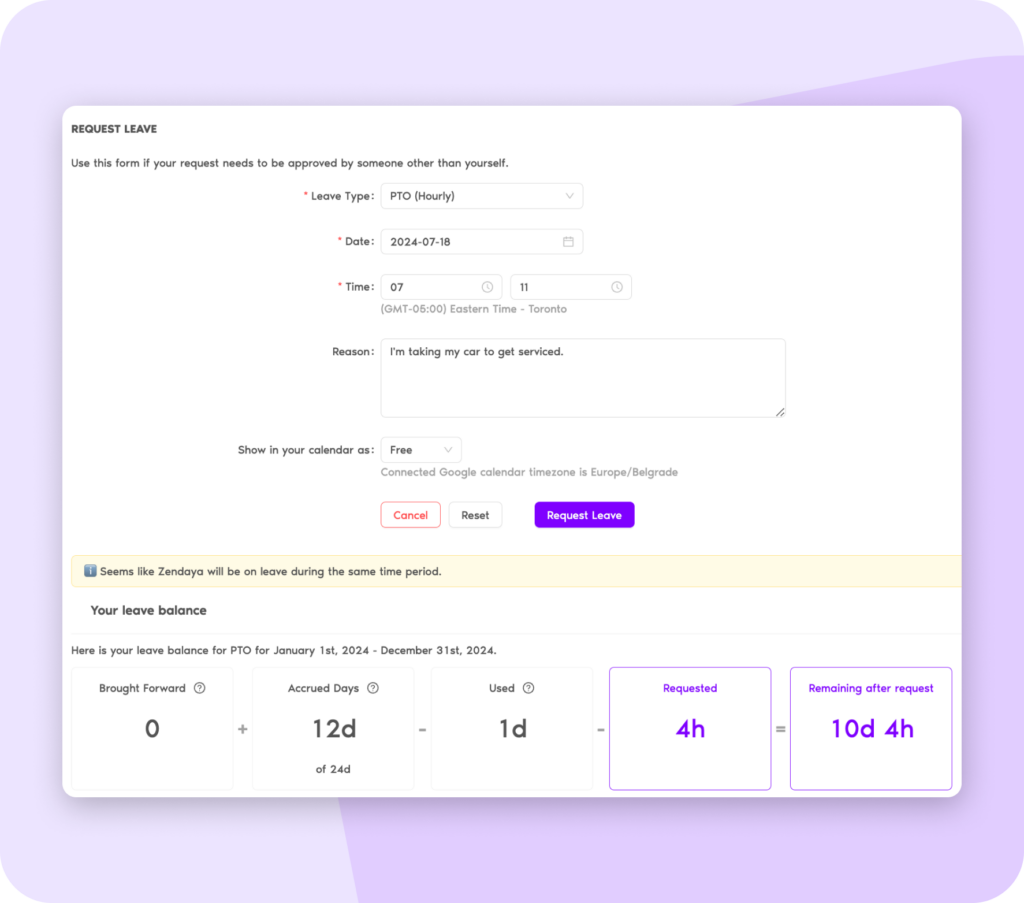
Vacation Tracker is a robust leave management solution that integrates directly into Slack, Microsoft Teams, and Google Workspace. It allows teams to request and approve time off without leaving their favorite collaboration tools.
Vacation Tracker’s customizable settings, detailed reports, and automated reminders make it a top choice for remote and hybrid teams looking to simplify their leave management processes.
Key Features:
- Deep integration with Slack, Teams, and Google Workspace
- Customizable leave types and accrual policies
- Daily and weekly absence summaries
- Automated reminders for managers and employees
3. BambooHR
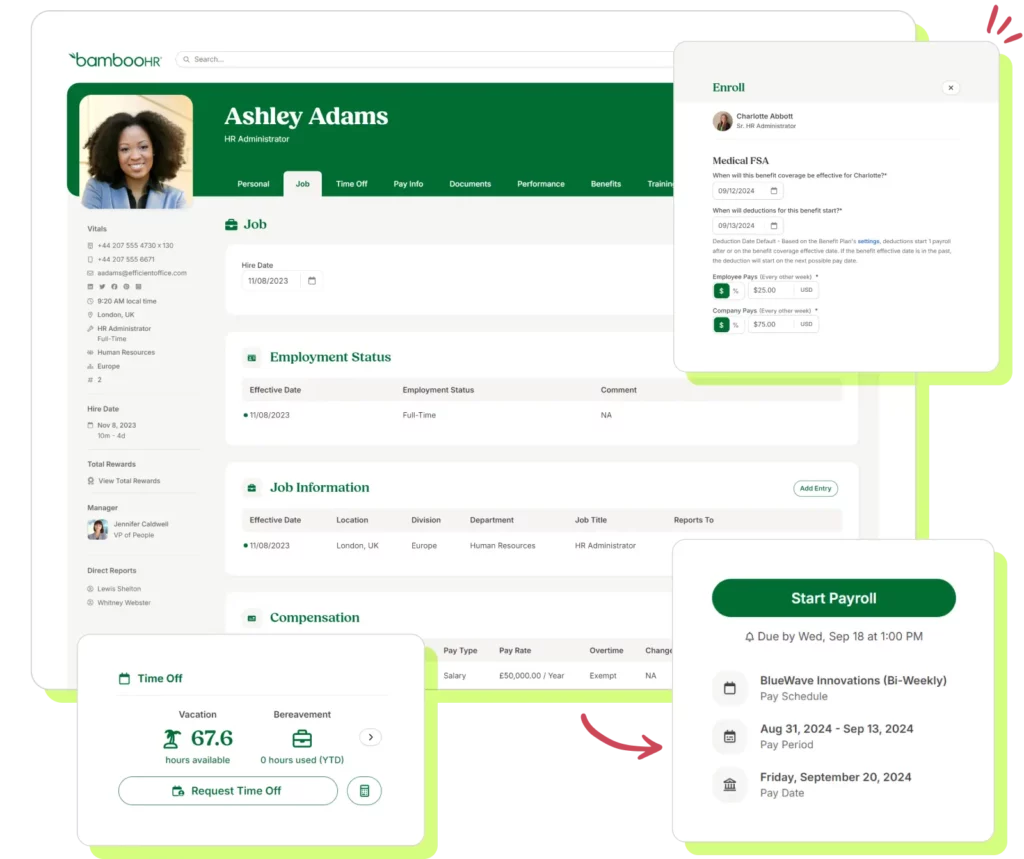
BambooHR is more than just an HR management system—it also offers a powerful vacation tracking feature tailored for small to mid-sized businesses. It simplifies PTO tracking by automating accruals and approvals, while seamlessly integrating with payroll and other HR functions. With an intuitive interface and mobile access, it makes leave management efficient for both employees and managers.
Key Features:
- PTO tracking with automated accruals and approvals
- Easy-to-use employee self-service portal for leave requests
- Integration with payroll and other HR tools
- Mobile app for managing time-off on the go
4. Timetastic
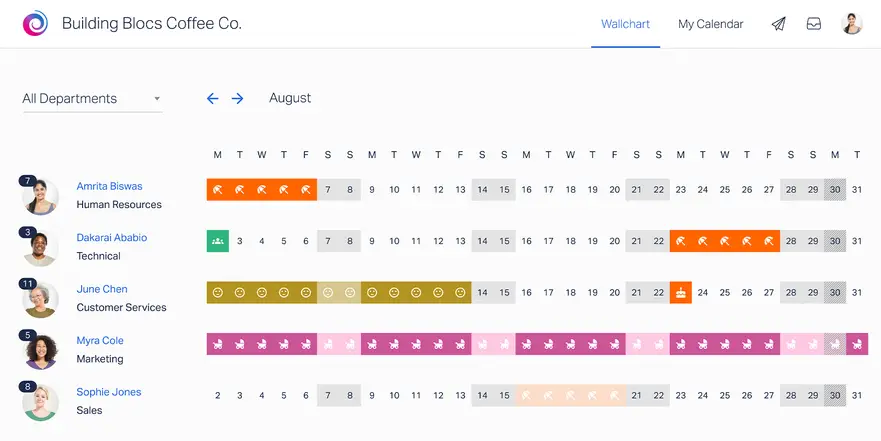
Timetastic is a straightforward, no-frills vacation tracker designed for small businesses that value simplicity and efficiency. It offers an affordable solution for managing employee time off, focusing on ease of use without overwhelming features. With a clean calendar view and seamless integrations, it makes tracking absences hassle-free.
Key Features:
- Clear, easy-to-use calendar view of team absences
- Integration with Google Calendar and Outlook for seamless scheduling
- Automated email notifications for upcoming leaves
- Mobile app for quick and convenient access on the go
Conclusion
A reliable vacation tracker is more than just a convenience—it’s a necessity for modern businesses striving for efficiency, transparency, and compliance. By automating the time-off management process, companies can reduce administrative workloads, improve team communication, and ensure that leave policies are applied consistently and fairly.
Whether you’re a small startup or a large enterprise, choosing the right vacation tracker like Day Off can significantly enhance your team’s productivity and satisfaction. Take the time to evaluate your organization’s unique needs, explore the features of various tools, and implement a solution that will help your business thrive in today’s fast-paced work environment.
